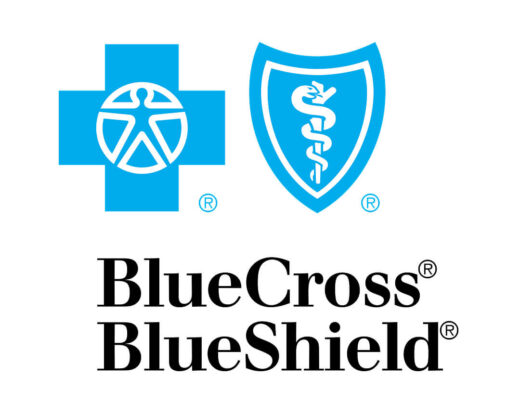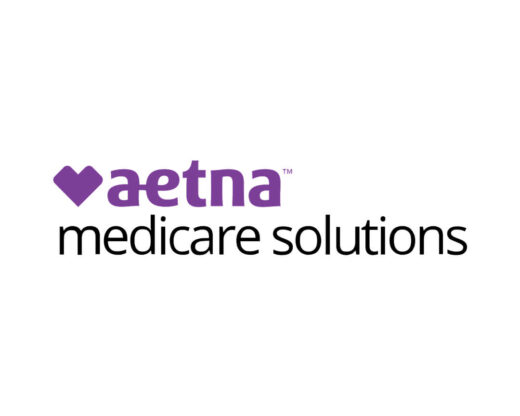Written by Michael LaPick
Healthcare Writer
We aim to help you make informed healthcare decisions. While this post may contain links to lead generation forms, this won’t influence our writing. We follow strict editorial standards to give you the most accurate and unbiased information.
Key Takeaways
- Cigna Medigap plans help pay deductibles, copays, and coinsurance that Original Medicare doesn’t cover, giving you more predictable costs.
- The most common Cigna Medicare Supplement plans are Plan G, Plan N, Plan A and (for some people) Plan F and high-deductible options; availability varies by state.
- Cigna Medicare Supplement Plan G offers extensive coverage and is often a top choice for new beneficiaries willing to pay the Part B deductible themselves.
- Cigna markets discounts of up to 25% in some states (premium + online enrollment discounts) and extra perks through its Healthy Rewards® program, which can sweeten the deal.
- Premiums for Cigna Medicare Supplement plans vary widely by age, ZIP code, tobacco use, and rating method—so it’s essential to compare quotes in your area and review how rates may change over time.
Overview: Is a Cigna Medigap Plan Worth a Look?
If you have Medicare—or you’re helping a parent or spouse who does—you already know that “Original” Medicare (Part A and Part B) doesn’t cover everything. There are deductibles, copays, and coinsurance, and there’s no built-in cap on out-of-pocket costs.
That’s where Medicare Supplement insurance (Medigap) comes in. Cigna Medicare Supplement plans are one set of Medigap plans designed to work alongside Original Medicare, not replace it. In this Cigna Medicare Supplement review, we’ll break down:
- How Cigna Medigap plans work
- What makes Cigna Plan G stand out
- What to know about pricing, discounts, and perks
- How Cigna compares with other options in 2026
By the end, you’ll have a clearer sense of whether Cigna belongs on your shortlist—and what questions to ask before you enroll.
Compare options HERE & start your health plan journey.
Why Choose Cigna Medicare Supplement Plans?
Medigap basics first. A Medicare Supplement (Medigap) policy is extra insurance you buy from a private insurer to help pay your share of Medicare costs like copayments, coinsurance, and deductibles.
Cigna Medicare Supplement plans fit this mold:
- They help pay Part A hospital and Part B medical cost-sharing.
- You can generally see any doctor or hospital that accepts Medicare—there are no Medigap provider networks.
- Some Cigna plans include foreign travel emergency coverage, which can be valuable if you travel outside the U.S.
How Cigna Medigap Plans Help You Save
Most standardized Medigap plans—including Cigna’s—offer:
- An extra 365 days of hospital coverage after Medicare hospital benefits are used up
- Part B coinsurance/copayment coverage (often 100%, depending on the plan letter)
- Skilled nursing facility coinsurance coverage on most mid-to-higher-tier plans
- Part A deductible coverage on many plan types
- Emergency care abroad, up to plan limits, on plans like G, N, and (for eligible) F
The real value of Cigna Medicare Supplement plans is making your costs more predictable: you trade unknown, potentially large bills for a regular monthly premium plus small remaining expenses.
Eligibility and When to Enroll in Cigna Medigap
To buy any Cigna Medicare Supplement plan, you typically must:
- Have Original Medicare Part A and Part B
- Live in a state and ZIP code where Cigna sells Medigap plans
- Keep paying your Part B premium (and the Medigap premium)
Your Best Window: Medigap Open Enrollment
Your Medigap Open Enrollment Period is a one-time six-month window that starts when you’re both 65 and enrolled in Part B. During this time:
- You have guaranteed issue rights—Cigna can’t deny you or charge more based on health.
- After this window, in most states, you may face medical underwriting and could be charged more or even denied Medigap coverage in some situations.
If you’re considering Cigna Medigap plans, this open enrollment period is often the best time to lock in coverage.
Key Features of Cigna Medicare Supplement Policies
Beyond the standard Medigap benefits, Cigna adds a few notable features and perks:
- No provider networks: Use any doctor or hospital that accepts Medicare—no referrals required in most cases.
- Guaranteed renewable: As long as you pay premiums, your policy generally can’t be canceled because of health issues.
- Up to 25% in discounts: Cigna advertises premium discounts of up to 20%, plus an additional 5% online-application discount for eligible applicants in some states.
- Healthy Rewards® program: Many Cigna Medicare Supplement policies include access to Healthy Rewards®, which offers discounts on wellness products and services like fitness programs, vision, hearing, and other health services (availability and details vary by plan and state).
- 24/7 health information line: Some Cigna Medigap members can speak with a nurse or health advocate by phone around the clock.
NOTE: These extra programs are not insurance, can be changed or discontinued, and may not be available in every state or plan.
Compare options HERE & start your health plan journey.
Which Cigna Medigap Plans Are Available?
Like other insurers, Cigna sells standardized Medigap plans labeled by letters. The exact mix depends on your state, but commonly offered Cigna Medicare Supplement plans include:
- Plan A – Basic benefits; covers core Part A and Part B coinsurance but not the Part A deductible.
- Plan G – Comprehensive coverage for new beneficiaries (covers everything Plan F does except the Part B deductible).
- High-Deductible Plan G – Same benefits as Plan G, but you must pay a higher annual deductible before coverage kicks in, in exchange for a lower premium.
- Plan N – Lower premiums with copays for some office and ER visits and no coverage for Part B excess charges.
- Plan F and High-Deductible F – Only available if you were first eligible for Medicare before January 1, 2020, because new Medigap policies can’t cover the Part B deductible for people new to Medicare.
Not every plan is available in every state, and Cigna chooses which plan letters to offer in each market.
Cigna Medigap Plan G Review: Why Plan G Stands Out
Across the entire Medigap market (not just Cigna), Plan G is now the most popular Medigap option—accounting for about 39% of all Medigap policyholders in 2023, according to the Kaiser Family Foundation (KFF).
What Cigna Plan G Covers
Cigna Medicare Supplement Plan G is marketed as ideal for people who want extensive coverage and competitive premiums:
- Covers Part A hospital deductible and coinsurance, plus an extra 365 days in the hospital after Medicare coverage ends.
- Covers Part B coinsurance or copays (after you pay the Part B deductible).
- Pays for skilled nursing facility coinsurance, the first three pints of blood, and hospice coinsurance.
- Covers Part B excess charges in states where providers are allowed to bill them.
- Includes 80% foreign travel emergency coverage up to plan limits (after a small annual deductible).
Who Might Like Cigna Plan G?
A Cigna Medicare Supplement Plan G review typically highlights that Plan G works well if:
- You want robust coverage that leaves you with relatively few surprise bills.
- You’re okay paying the Part B deductible each year in exchange for lower premiums than Plan F.
- You like the idea of any-doctor flexibility and predictable costs versus network-based coverage.
Because Plan G is the most comprehensive option available to people new to Medicare, many shoppers start their Cigna Medigap Plan G reviews by comparing Plan G with Plan N and high-deductible Plan G in their ZIP code.
Cigna Plan G vs. Plan N vs. Plan A (High-Level Comparison)
Note: This table compares general features of standardized plans according to Medicare.gov, not exact Cigna pricing. Always verify benefits and premiums in your state.
| Feature / Plan Type | Cigna Plan A | Cigna Plan G | Cigna Plan N |
| Part A coinsurance + 365 extra hospital days | ✔ | ✔ | ✔ |
| Part B coinsurance/copay | ✔ | ✔ (after Part B deductible) | ✔ (with small copays) |
| Part A deductible | ✖ | ✔ | ✔ |
| Skilled nursing facility coinsurance | ✖ | ✔ | ✔ |
| Part B excess charges | ✖ | ✔ | ✖ |
| Foreign travel emergency (to plan limits) | ✖ | ✔ | ✔ |
| Typical premium level | Lowest among the three | Mid-to-higher, depending on market | Often lower than G, higher than A |
| Best for… | Minimal extra protection needs | Most comprehensive coverage for new enrollees | Budget-minded, willing to trade copays |
Compare options HERE & start your health plan journey.
How Much Do Cigna Medicare Supplement Plans Cost?
Cigna, like all Medigap insurers, must offer standardized benefits, but prices can vary significantly. Premiums generally depend on:
- Your age and sometimes the age rating method used (community, issue-age, or attained-age)
- Your ZIP code and state
- Gender and tobacco use, in many states
- The specific plan letter (Plan G vs. Plan N vs. Plan A)
For a 65-year-old nonsmoking woman in a typical U.S. market:
- A realistic “average” premium for Plan G might be in the ball-park of $140–$180/month.
- In lower cost areas or with favorable underwriting it might run closer to $120/month or less.
- In higher cost areas or less competitive markets it could be $250/month or more.
Source: Cigna website
Cigna notes that, in some states, premium discounts of up to 25% may be available when you factor in household and online-application discounts.
Because of this variability, a good process is:
- Get quotes for Cigna Medigap plans (Plan G, N, and maybe high-deductible G) in your ZIP code.
- Compare those to at least 1–2 other insurers for the same plan letters.
- Look at not just the starting price but also how premiums are rated and how they might rise over time (community vs attained-age).
Tip: You can use Healthcare.com, MedicareGuide.com tools, or call a licensed insurance agent to compare Cigna Medicare Supplement plans alongside other carriers in your state.
Shop for a Medicare plan with additional benefits!
Cigna Medigap Plans vs. Medicare Advantage: Can I Have Both?
Short answer: No.
According to Medicare, Medigap policies are designed to supplement Original Medicare, while Medicare Advantage (Part C) is an alternative way to receive your Medicare benefits. You generally cannot have a Medigap policy and a Medicare Advantage plan at the same time.
If you’re considering Cigna:
- Cigna has historically offered Medicare Advantage and Part D plans in some markets, but those products are separate from Cigna Medicare Supplement plans.
- Medigap may appeal to people who want maximum provider flexibility and predictable cost-sharing, while Medicare Advantage may appeal to those who prefer lower upfront premiums and are comfortable with networks and prior authorizations.
When deciding between Cigna Medigap plans and any Medicare Advantage plan, compare:
- Total yearly costs (premiums + out-of-pocket)
- Provider choice and travel flexibility
- Need for extras like dental, vision, and Part D drug coverage (Medigap doesn’t include these).
Quick FAQ: Cigna Medicare Supplement Plans 2026 Reviews
Q: Are Cigna Medicare Supplement plans good for 2026?
A: Cigna is a large national brand with standardized Medigap benefits, some meaningful discounts, and wellness perks. Whether it’s “good” for you in 2026 comes down to price in your ZIP code, the plan letter you choose, and how much you value extras like Healthy Rewards®. Always compare Cigna’s quotes with at least one or two other carriers.
Q: Why is Cigna Plan G so popular?
A: Across the market, Plan G is now the most popular Medigap plan because it’s the most comprehensive option available to new Medicare beneficiaries—it covers nearly all Part A and B cost-sharing except the Part B deductible.
Q: Do Cigna Medigap plans cover prescriptions?
A: No. Like all Medigap plans, Cigna Medicare Supplement plans do not include outpatient prescription drug coverage. You’d generally need to enroll in a stand-alone Part D plan if you want drug coverage.
Q: Can I switch to a Cigna Medigap plan later?
A: You can apply later, but outside your initial Medigap Open Enrollment Period, medical underwriting often applies in many states, and you could be denied or charged more based on health. Some states have extra protections; others don’t.
Conclusion: Is a Cigna Medigap Plan Right for You?
Cigna Medicare Supplement plans offer a familiar combination: standardized Medigap benefits, the flexibility to see any Medicare-accepting provider, and a few extras like discounts and wellness programs. For many people, Cigna Medigap Plan G will be the benchmark: strong coverage, fewer surprise bills, and premiums that can be competitive in many states.
But Medigap is never one-size-fits-all. Your ideal choice depends on:
- Your budget and health needs
- How often you see doctors or specialists
- Whether you prioritize flexibility vs. lower monthly premiums
Your best next steps:
- Use a comparison tool (such as Healthcare.com, our parent company) to see Cigna Medicare Supplement plans 2026 reviews and quotes in your ZIP code.
- Compare Cigna’s Plan G, Plan N, and any high-deductible options against at least one or two other carriers.
- Consider talking with a licensed Medicare agent who can walk you through the trade-offs based on your medications, doctors, and travel plans.
For a broader comparison beyond Cigna, explore the best Medicare Supplement insurance companies for 2026 to see how top carriers stack up on pricing, benefits, and member satisfaction.
With a little homework now, you can choose a Cigna Medigap plan—or another option—that helps make your Medicare coverage more predictable and easier to live with for years to come.
Compare options HERE & start your health plan journey.
Thank you for your feedback!








